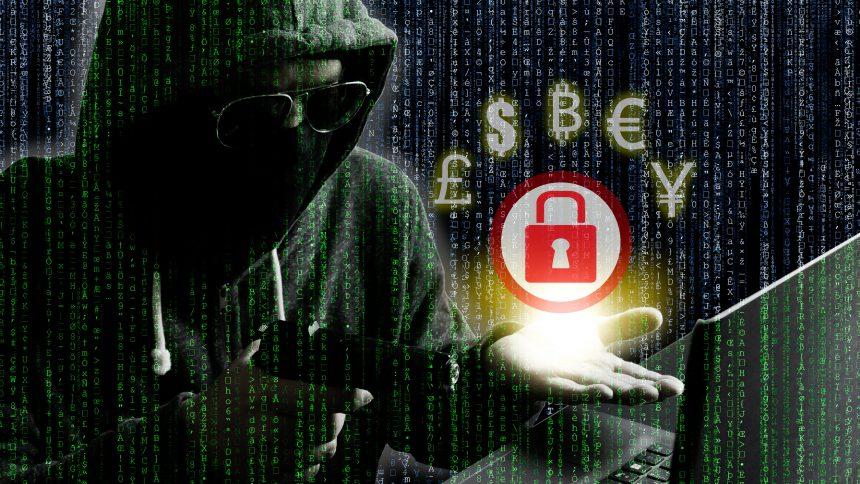Ransomware is a type of malicious software (malware) that encrypts files on a victim’s computer, rendering them inaccessible until a ransom is paid to the attacker. This form of cybercrime has become increasingly prevalent, targeting individuals, businesses, and organizations worldwide. The rise of ransomware has led to significant financial losses and data breaches, causing a growing concern among users and cybersecurity experts alike.
One particularly notorious strain of ransomware is Ztax Ransomware, a new member of the Dharma ransomware family. This article aims to provide an in-depth understanding of Ztax, its functionality, symptoms of infection, and the steps necessary for removal.
Download SpyHunter Now & Scan Your Computer For Free!
Remove this and any other malicious threats to your system by scanning your computer with SpyHunter now! It’s FREE!
Understanding Ztax Ransomware
Ztax Ransomware poses a serious threat to users by employing sophisticated methods to infiltrate systems. Typically, this malware spreads through malicious email attachments, software downloads, or exploit kits that target vulnerabilities in software. Once installed, Ztax begins its encryption process, targeting a wide range of file types, including documents, images, and databases.
Installation and Functionality
Upon execution, Ztax Ransomware performs several actions:
- Initial Infiltration: It may arrive through phishing emails containing malicious links or attachments. Users unwittingly download the ransomware when they click these links or open the attachments.
- File Encryption: Once on the system, Ztax scans for files to encrypt. It utilizes strong encryption algorithms to lock files, making them inaccessible without a decryption key.
- File Extension Change: After encrypting files, Ztax alters their extensions to a specific format, often using a unique identifier. For example, a file named
document.docxmight becomedocument.docx.ztax. - Ransom Note: Ztax leaves a ransom note on the infected system, detailing the payment demanded for decryption. The note typically includes instructions for payment, usually in cryptocurrency, to maintain the attacker’s anonymity.
Consequences of Infection
The consequences of a Ztax infection can be dire. In addition to the immediate loss of access to important files, users may face financial repercussions due to the ransom demand. Paying the ransom does not guarantee that files will be restored, and it encourages the continuation of cybercrime. Furthermore, sensitive information may be compromised, leading to identity theft or further attacks.
Ransom Note Overview
The ransom note left by Ztax Ransomware serves as a chilling reminder of the threat it poses. It typically includes:
- Urgent Language: The note stresses the urgency of payment and the risks of not complying.
- Payment Instructions: Detailed instructions on how to make the payment, often requiring cryptocurrency.
- Threats: It may threaten to delete the decryption key or permanently delete files if the ransom is not paid within a certain timeframe.
Text presented in the Ztax pop-up message:
All your files have been encrypted!
Don’t worry, you can return all your files!
If you want to restore them, write to the mail: taxz@cock.li YOUR ID –
If you have not answered by mail within 12 hours, write to us by another mail:taxz@cyberfear.com
Free decryption as guarantee
Before paying you can send us up to 3 files for free decryption. The total size of files must be less than 3Mb (non archived), and files should not contain valuable information. (databases,backups, large excel sheets, etc.)
How to obtain Bitcoins
Also you can find other places to buy Bitcoins and beginners guide here:
hxxp://www.coindesk.com/information/how-can-i-buy-bitcoins/
Attention!
Do not rename encrypted files.
Do not try to decrypt your data using third party software, it may cause permanent data loss.
Decryption of your files with the help of third parties may cause increased price (they add their fee to our) or you can become a victim of a scam.
Text presented in the “manual.txt” file:
You want to return?
Threat Family
Ztax Ransomware is categorized as a ransomware-as-a-service (RaaS) threat, which allows various cybercriminals to utilize its framework for their attacks. This model increases the spread and impact of the malware.
Symptoms of Ztax Ransomware Infection
Identifying an infection early can mitigate the damage caused by Ztax Ransomware. Common symptoms include:
- Inability to open certain files, accompanied by a new file extension.
- The presence of a ransom note on the desktop or within folders.
- Unusual system behavior, such as slow performance or frequent crashes.
Detection Names
To verify if Ztax Ransomware is present on your system, look for the following detection names commonly associated with this malware:
- Ztax Ransomware
- .ztax File Virus
- Ztax Ransomware Infection
Similar Threats
In addition to Ztax Ransomware, users should be aware of similar threats that can cause significant damage, such as:
- Ryuk Ransomware
- Dharma Ransomware
- Conti Ransomware
Comprehensive Removal Guide
If you suspect that Ztax Ransomware has infected your system, follow these detailed steps for removal:
Download SpyHunter Now & Scan Your Computer For Free!
Remove this and any other malicious threats to your system by scanning your computer with SpyHunter now! It’s FREE!
Step 1: Isolate the Infected Device
- Disconnect your device from the internet to prevent further spread of the malware and stop communication with the attacker.
Step 2: Enter Safe Mode
- Restart your computer.
- As it boots up, press
F8(orShift + F8on some systems) until you see the Advanced Boot Options menu. - Select “Safe Mode with Networking” to access essential functions without fully launching the malware.
Step 3: Scan for Malware
- Download and install SpyHunter.
- Run a full system scan to detect and remove Ztax Ransomware and other potential threats.
Step 4: Remove Suspicious Programs
- Open the Control Panel and navigate to “Programs and Features.”
- Look for any unfamiliar programs or those installed around the time of the infection. Uninstall them.
Step 5: Restore Your Files
If you have backups of your files, restore them from a secure location. Ensure that your backups are not connected to the infected system during this process.
Prevention Strategies
To protect your system from future ransomware attacks, consider implementing the following strategies:
- Regular Backups: Keep regular backups of your important files on external drives or cloud storage.
- Update Software: Ensure that your operating system and all software are updated to patch vulnerabilities.
- Exercise Caution: Be wary of email attachments and links from unknown sources. Always verify the sender’s identity.
- Use Anti-Malware Tools: Regularly scan your system with tools like SpyHunter to detect and remove threats.
Conclusion
Ztax Ransomware poses a significant risk to individuals and organizations alike, making awareness and prevention critical. By understanding its functionality, recognizing symptoms of infection, and following the removal guide, users can protect themselves from the devastating effects of this malware.
For peace of mind, consider downloading SpyHunter today and scan your computer for free to ensure it is secure from threats like Ztax Ransomware.





